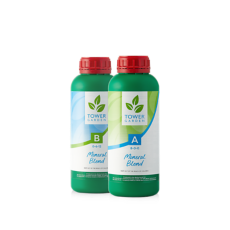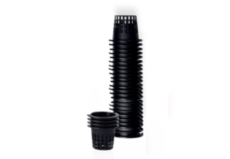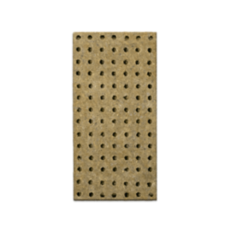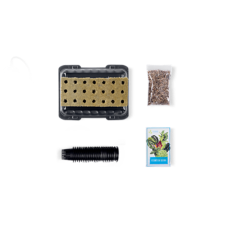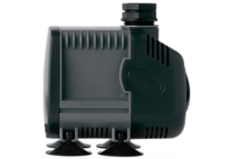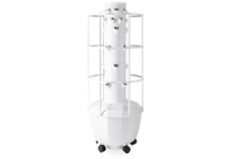12 Common Tower Garden Challenges
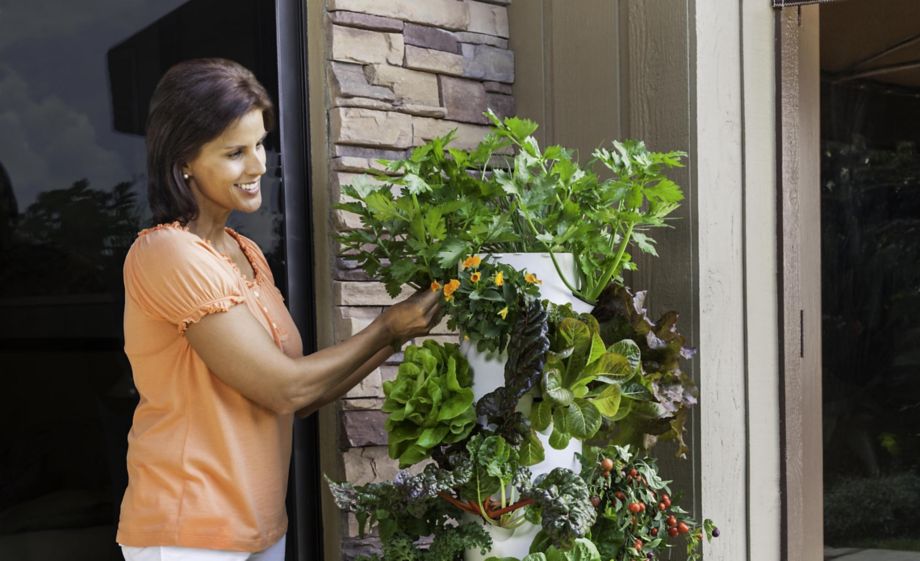
Throughout the course of your Tower Garden journey, there’s a chance you may run into some problems. Pests, plant disease, and algae are all common gardening challenges that will require some problem-solving. Fortunately, most common Tower Garden issues can be overcome with just a few simple steps. Explore these simply ways to fix them - or avoid them altogether!
Water leaks around growing ports or section seams
To function properly, Tower Garden must be on a level surface. If your Tower Garden is leaking, make sure it's level.
If your system is level but it still leaks, you may need to simply push the growing sections together more tightly.
The pump suddenly stops pumping
If you're about halfway through a growing season and your pump quits working, plant roots may have jammed it.
To fix this:
- Unplug the pump.
- Pull the pump up through the access port.
- Remove the pump cover.
- Flush the pump with water to remove any debris.
If your pump still has problems after you complete these steps, reach out to Tower Garden Customer Care.
To prevent roots from clogging your pump, trim those that grow down into the reservoir. You can trim roots up to half their length without harming your plants.
pH constantly drifts out of the recommended range
Tower Garden doesn't use soil as a growing medium. Instead, it grows plants with a nutrient-rich solution, oxygen, and water. So the quality of the water you pour into your Tower Garden is important.
If you use chlorinated, hard, or softened water, you’ll probably see some issues, including fluctuating pH.
Here's what you can do:
- For hard water, fill your Tower Garden using an RV water filter. If you're not sure whether you have hard water, check with your water provider.
- For softened water (i.e., water from a home softener system), fill your Tower Garden using a reverse osmosis filter system or buy distilled water.
- For chlorinated water, which can be characteristic of tap water, leave the water out in the sun for 48 hours.
The bad odour could be rotting plant material — another side effect of not regularly cleaning out the pump.
During the growing season, roots and other plant debris will likely find a way into your pump. If left there, that debris will begin to decay. And decaying plant material can make the water inside your Tower stink.
That decaying matter also has the potential to spread disease as it circulates through the growing system — just another reason to clean your pump on a monthly basis!
Algae growth on rockwool
Algae growth — slimy green stuff growing near the base of your plants — is relatively common (since you're supplying nutrients, water, and light — everything necessary for algae’s survival). And it's typically harmless to plants.
But, that said, if you do notice something growing on the rockwool, make sure it's algae and not one of these plant diseases.
Pests infest your indoor Tower Garden
When growing indoors, many gardeners want to bring outdoor plants (both seedlings and mature plants) inside. But doing so could cause trouble, as outdoor plants often bring bugs inside with them.
Even if plants appear to be healthy and show no visible signs of problems, you should still reconsider bringing them inside. They might be harbouring aphids, small caterpillars — both surprisingly hard to spot — or even the eggs of certain pests on the undersides of leaves. Since the pests have no natural predators indoors, they can multiply quickly once inside.
Luckily, reducing the risk of an indoor infestation is fairly easy: Just start all your indoor plants fresh, and regularly check them for signs of trouble. The earlier you catch a pest problem, the easier it will be to control.
Seeds won't germinate
Sprouting seeds can be a little tricky. Here are three common reasons seeds may not germinate:
- Poor seed quality. For best results, start with the best seeds, like the seeds that ship with Tower Garden. If you're buying new seeds, take care to source them from a reputable provider.
- Old or expired seeds. Some seeds have shorter shelf lives than others. The germination rate of spinach and onion seeds, for example, drops after about a year. So when in doubt, try using new seeds.
- Temperature. Generally, the seeds of warm season crops germinate best in warmer environments, while those of cool season crops prefer cooler ones. In fact, some gardeners refrigerate spinach seeds — which are notoriously stubborn — to encourage germination. (If you try that, just be sure to move the seeds out of the fridge as soon as they sprout.) For seeds of warm season crops, consider using a heating pad.
If you address these factors and still have problems, try the following:
- Soak your seeds. Initially soaking seeds overnight often speeds germination, as it helps moisture break through a seed's outer coating.
- Germinate using the "baggie" method. Rather than start your seeds in rockwool, sprout them using the baggie method. The process is simple: Distribute seeds on a dampened paper towel placed in an open sandwich bag. (This creates a sort of miniature greenhouse.) Check the bag every few days, moistening the paper towel as needed. As soon as the seeds germinate, transplant them to rockwool cubes.
Seedlings wilt after transplanting
This can be a symptom of various problems. Mineral Blend concentration is one possibility.
When you're starting a fresh Tower Garden (one full of small seedlings), fill it with a half-strength nutrient solution. That ratio is 10 mL of Mineral Blend A + 10 mL of Mineral Blend B per gallon (10 L) of water.
If you're using full-strength nutrients and your seedlings are wilting, try diluting the solution. Your plants should perk up.
After you've been growing for a month or so, you can increase the solution to full-strength (20 mL each of A and B per gallon or 10 L of water).
Another time you should use half-strength nutrients is in hot weather. Heat evaporates the water more quickly, resulting in a more concentrated solution.
Plants grow slowly
As soon as your seeds sprout, they need light. Without it, they'll grow lanky and weak, spending all available energy to search for light. That means they won't have the resources they need to develop strong root structures — so when you put them in your Tower Garden, your seedlings will struggle to grow. So, for healthy, happy seedlings, give them light. Once they're about 7.6 cm tall and have roots protruding from the rockwool, you can transplant them. Then, keep the light coming: Outdoors, most plants require at least 6–8 hours of sun. Indoors, they need about 14–16 hours of artificial light.
Many people assume the light from a south-facing window is all indoor plants need. But that’s rarely enough. To ensure your indoor garden grows to its full potential, use LED Indoor Grow Lights with your Tower Garden.
Tomatoes (or other plants) take over
Some plants, like tomatoes, squash, and pole beans, will send out vines, tendrils, and roots. That makes them pretty easy to grow. Unfortunately, it can also make them difficult neighbours to other plants.
With plants like these, your Tower can get pretty crowded. And when plants grow together thickly, they create ideal conditions for leaf fungus diseases.
You can prevent all that by doing a little pruning here and a little harvesting there. That’ll help keep your plants' growth in check, as well as making them healthier and more productive.
Plants don't produce
Having trouble harvesting a good crop? Your problem may be a lack of bees.
With declining pollinator populations, many gardeners are finding they must "be the bee" to ensure a hearty harvest. If you're growing indoors, or if you don't see many bees or other pollinators around your outdoor garden, consider hand-pollinating your plants.
Crops taste bitter (or turn black and die)
Certain seasons are perfect for growing certain crops outdoors. Others? Not so much.
Lettuce is refreshing and delicious in the fall and spring. But try growing it in late July, and — in many growing zones — it’s likely to bolt. The result is a bitter harvest you won’t want to eat.
Likewise, if you try to grow tomatoes in November, they may not even make it past the seedling stage. And as soon as a little frost hits, they'll probably die.
So be strategic about what plants you decide to grow in your outdoor Tower Garden each season. To learn what grows well in your area at different times during the year, reference this planting calendar or check with your county extension office.
Download the Tower Garden troubleshooting guide by clicking here.
Need more answers?
If you’re struggling with a problem not mentioned above, we’re here to help! You can:
- Call or email Tower Garden Customer Care.
- Confab with other growers on the Tower Garden Facebook Page.

